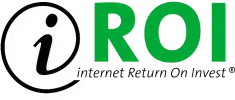In today's digital age, adaptive strategies are becoming increasingly important. Dynamic marketing helps companies to address individual customers in a suitable way and thus significantly increase their success. Dynamic ads in particular play an important role in these concepts, as they enable personalised advertising in real time and thus increase attention and conversion rates.
What characterises dynamic marketing?
Dynamic marketing is based on the automated creation and playout of content that adapts individually to user behaviour and interests. This not only increases the relevance of advertising messages, but also optimises the customer journey. A central element is dynamic ads, which generate personalised ads based on product catalogues, user interactions and other data.
A shop for outdoor equipment, for example, dynamically shows hiking enthusiasts suitable equipment based on previous visits or purchasing interests. Another example is provided by fashion providers who present their customers with seasonal trends and matching accessories directly in the adverts. An online booking platform can also dynamically display hotels or travel offers that match the user's individual search behaviour.
Dynamic Marketing helps companies to establish a direct line to their target group with personalised messages and strengthen their trust.
Dynamic ads in everyday life: practical examples from digital marketing
Dynamic ads help brands to organise marketing activities in an efficient and targeted manner. In e-commerce, for example, dynamic ads skilfully remind customers who have left items in their shopping basket to complete their purchase. This often leads to increased sales, as potential customers see the exact products they previously selected again.
BEST PRACTICE for a client (name concealed due to NDA contract): A dynamic ad campaign was implemented for a sustainable fashion label that always presented users with matching outfits according to their browsing history. The changeover helped to increase repurchase rates and intensify brand loyalty.
One example from the electronics sector is a provider of smart home products that offers personalised recommendations via dynamic ads - for example, devices that match the security camera previously purchased. This not only increases sales per customer, but also demonstrates a high degree of customer orientation.
Service providers from the fitness sector also use dynamic marketing: personalised ads point out accessories, nutritional supplements or training plans based on users' previous interests, thus promoting the cross-selling effect.
How dynamic marketing improves the customer approach
A key advantage of dynamic ads in the context of dynamic marketing lies in the personalised adaptation to the respective target group. At an international furniture company, adverts were automatically assigned to the products that visitors to the website had viewed. Combined with seasonal campaigns, this enabled the company to significantly improve its reach and conversion rates.
This approach is also paying off in the travel industry: Visitors who have viewed a city trip to Paris see targeted offers for accommodation or guided tours in Paris on their next visit or on social networks. This creates concrete buying impulses.
For a start-up in the technology sector, the implementation of dynamic marketing meant that customers were shown targeted product features that matched their profile or previous usage behaviour. This relieved the burden on support, as many questions were clarified in advance with the right content.
Tips for the successful implementation of dynamic marketing
In order for dynamic marketing to realise its full potential, experts advise the following steps:
- Ensure data quality: Product catalogues, user information and web tracking must be up-to-date and complete.
- Carry out segmentation: The target groups should be clearly defined in order to generate targeted ad content.
- Regular optimisation: Algorithms and campaigns should be continuously analysed and adapted.
For example, a furniture store can adapt advertising banners to particularly popular furnishing styles. Another tip is to place adverts across all devices, as many users now surf on both mobile and desktop.
An example from the food retail sector shows how dynamic marketing can be used to create individual offers for favourite products and thus strengthen customer loyalty in many different ways. Service providers from the education sector are also integrating dynamic content to recommend courses or content that match the interests of learners.
Dynamic marketing as a companion to your corporate strategy
Dynamic marketing is not a one-off project, but an ongoing process that requires support and expertise. iROI coaching supports companies in strategically implementing and continuously optimising dynamic ads. This gives employees valuable impetus to plan and implement targeted measures.
Many customers come to us with the desire to master the balancing act between efficiency and personalisation. They often report how Dynamic Marketing helps them to create relevant content and save resources at the same time. The support is particularly valuable when it comes to integration into existing marketing processes and data strategy.
My analysis
Dynamic marketing offers companies a wide range of opportunities to address customers in a more targeted and personalised way. Dynamic ads in particular are effective tools for meeting user needs quickly and individually. This approach increases user loyalty, promotes conversion and improves the overall customer experience.
The examples from different industries show how dynamic marketing can be used effectively to measurably increase success. Those who manage to effectively combine the technology with a well thought-out strategy will position themselves sustainably in the competition.
Professional support is available to harmoniously combine the topics of strategy, technology and implementation. iROI-Coaching is a valuable partner here and supports companies in dynamic marketing projects so that existing potential can be optimally utilised.
Further links from the text above:
Dynamic Content: Explanation, advantages and best practices [1]
Examples of dynamic adverts [2]
Creative ad formats and conversion rate with dynamic ads [4]
What are Facebook Dynamic Ads & why are they so effective? [8]
Dynamic Ads Definition & Examples [10]
For more information and if you have any questions, please contact Contact us or read more blog posts on the topic internet Return on Investment - Marketing here.
















